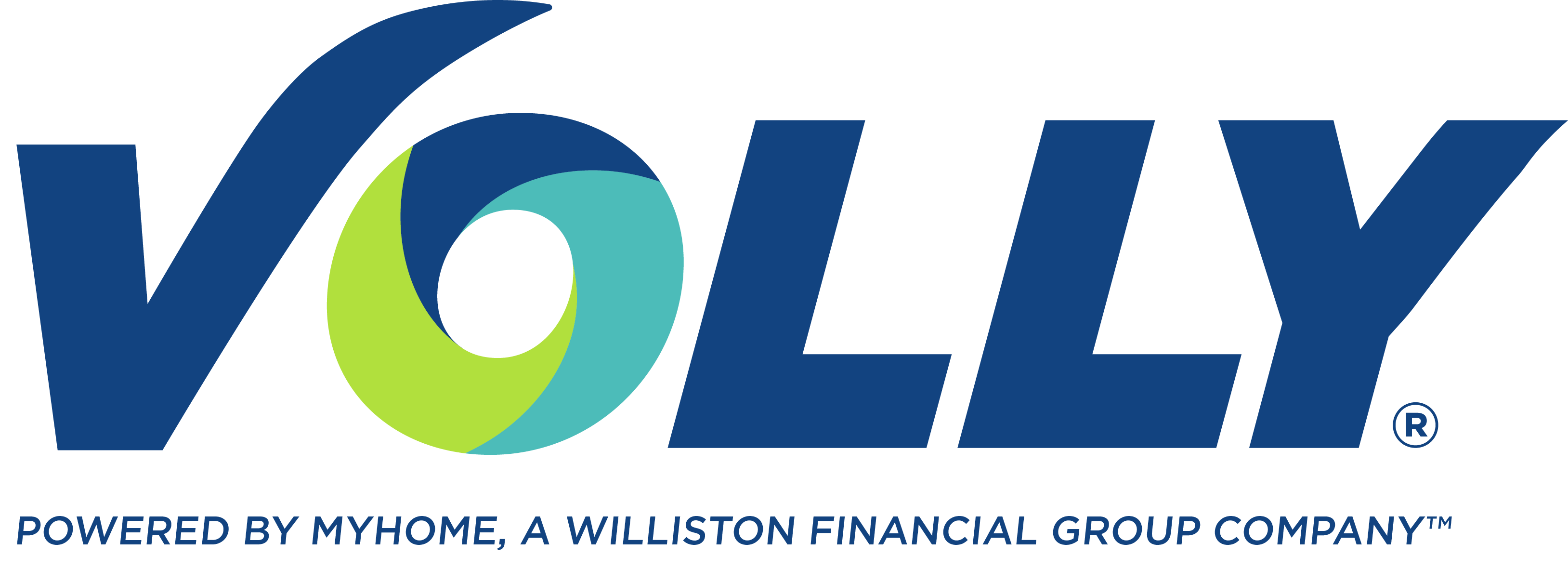Buckle Up! Housing Market Conditions Are About to Get a Tad Bumpy

The Key Factors Impacting the 2025 Housing Market
Like any sector of the U.S. economy, the housing market faces a high degree of uncertainty. Fluctuating interest rates, changing economic conditions, shifting demographics, and new government policies can create more favorable market conditions or, conversely, ones that are more challenging.
For those of us working in the mortgage industry, we have accepted that month-to-month unpredictability comes with the territory. However, it’s fair to state that the housing market has not seen this level of uncertainty since the Great Recession of 2007–2009.
In the latest Volly Insights post, we explore the recent developments and changes that are impacting our industry.
What a recession means for the housing market
The current presidential administration’s recently unveiled tariff plans on imported goods from Canada, Mexico, and China have stoked fears of a recession, which housing experts believe will further slow an already languid market.
When a recession hits, housing demand generally wanes, resulting in decreased home sales and declining home prices. During economic downturns, consumer confidence also falls, leading to reductions in spending on significant investments like homes.
Of course, the housing market’s response to a recession can vary widely. Realtor.com® Chief Economist Danielle Hale recently noted that the housing market’s response to an economic recession can vary extensively. While the Great Recession of 2007–2009 resulted in a prolonged drop in home sales and prices, Hale pointed toward the COVID-19-induced recession of 2020 and how its negative impacts on the housing market were short-lived. The chief economist also predicted that a 2025 recession would lead to rising housing stock and a drop in prices.
Hale’s colleague, Realtor.com® Senior Economist Joel Berner, agreed with her assessment. “Price reductions and time on market are already elevated in 2025,” said Berner, “as the market has started to rebalance. Buyers having less money in their pockets and more trepidation about making a major purchase will only accelerate these trends.” Berner also stated that the recent stock market dip is also negatively impacting the housing market. “Prospective buyers are watching some of their wealth that they might be using for a down payment on a new home evaporate,” said the senior economist.
The impact of tariffs
The White Houe imposed a 25% tariff on steel imports and raised 2018 aluminum tariffs from 10% to 25%. A 25% tariff was also imposed on Canadian and Mexican imports following a 30-day pause. Steel and aluminum are widely used in framing, roofing, plumbing, appliances, HVAC systems, and structural reinforcements. Also, about 70% of the dimensional lumber and drywall gypsum used in residential construction is imported from Canada and Mexico, respectively.
Tariffs are already driving up the cost of building materials used in new residential construction and home remodeling projects. For example, lumber futures jumped to $658.71 per thousand board feet in early March—their highest level in more than two years.
According to the National Association of Home Builders (NAHB), tariffs are projected to raise the cost of building a single-family home by $7,500 to $10,000. Last year, the NAHB estimated that every $1,000 increase in the median price of a new home prices out roughly 106,000 potential buyers.
“The homebuilding industry is already struggling with high material costs, labor shortages, and a housing affordability crisis,” said Robert Dietz, NAHB’s chief economist. “Raising tariffs to 50% only makes the situation worse. Homebuilders will be forced to pass these additional costs onto consumers, making new homes even less affordable.”
Hale recently outlined how these increased costs will affect buyers in search of newly constructed homes. “Rising costs due to tariffs on imports will leave builders with few options,” said the Realtor.com® chief economist. “They can choose to pass higher costs along to consumers, which will mean higher home prices, or try to use less of these materials, which will mean smaller homes.”
In 2018, when President Donald Trump first imposed a 25% steel tariff, homebuilders saw construction costs rise by 9%, leading to price increases of $5,000 to $7,000 per home. Tariffs also impact more than just the new construction industry. Homeowners planning renovations or repairs may also face higher prices for materials, such as steel beams, roofing, and appliances.
How rates typically fare during a recession
A recession’s impact on mortgage rates and the housing market is a bit more nuanced. In response to economic downturns, the Federal Reserve typically implements monetary policies aimed at stimulating economic activity, such as lowering its benchmark rate. These actions can lead to reduced mortgage rates, making borrowing more affordable for potential homebuyers.
However, during recessions banks often tighten lending standards, balancing out the potential savings from reduced rates. A recession can also dampen housing demand, primarily due to prospective homebuyers being concerned about employment stability.
Since February 25, the average top-tier 30-year fixed rate has been within a 0.12% range centered on 6.75%. Overall, rates have not shown this level of stability since September/October of last year.
Plans to downsize HUD
The administration’s plans to downsize the U.S. Department of Housing and Urban Development (HUD) could leave 34 states without local staff to underwrite mortgages. HUD oversees a variety of programs and initiatives to achieve its goal of providing housing support and uplifting communities, including:
- Enforcing the Fair Housing Act, which bans housing discrimination and ensures equal opportunity housing.
- Operating the Federal Housing Administration (FHA), which provides mortgage insurance on FHA loans.
- Issuing Community Development Block Grants, which are presented to cities, states, and counties to support community development.
Policymakers have warned that large cuts to HUD would negatively impact housing, community, and economic development projects as well as delay disaster recovery efforts.
CFPB’s future is uncertain
The current administration is also planning to abolish the Consumer Financial Protection Bureau (CFPB). Last week, approximately 1,700 CFPB workers were ordered to stay home in the latest effort to suspend the agency’s work. However, since the CFPB is a congressionally created agency, a vote from Congress would be needed to legally abolish it.
The CFPB primarily functions as the government’s enforcer and regulator of banks, lenders, and other financial institutions. The agency was created in response to the 2008 mortgage crisis during which lenders engaged in risky and deceptive lending practices, including offering subprime mortgages.
A recent National Mortgage Professional poll of industry professionals found that 55% supported downsizing the CFPB, while 45% wanted the agency to remain as is. Supporters argued that the CFPB is a necessary safeguard against financial misconduct. Many pointed to the $29 billion it has returned to consumers as proof of its value.
However, critics argued that the CFPB burdens financial institutions with excessive oversight and that many existing state and federal regulations already provide adequate consumer protection.
Ready to partner with Volly?
If you truly want to position your business for success in today’s ever-challenging housing market, you may need to work with an industry-leading marketing partner. This is where Volly can help. Schedule a demo today!

